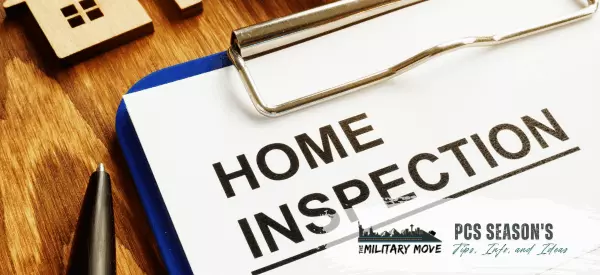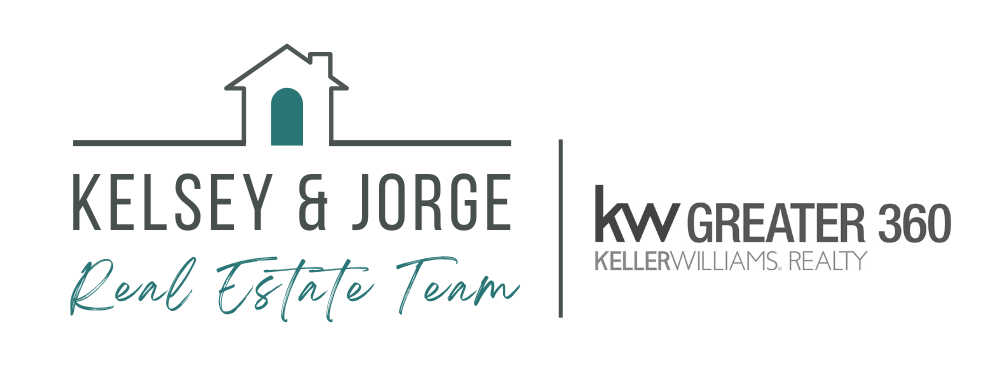
What Are The Most Common Housing Issues?
The most common housing issues often stem from maintenance, safety, and utility concerns. Here are some of the typical ones that tenants and homeowners frequently encounter: Structural Issues Leaking Roofs and Ceilings: Aging or improperly installed roofs can lead to leaks. Monitor your roof shingles, fascia boards, and eaves. Roof shingles can degrade from wind and rain causing leaks. Fascia boards can rot if not painted and sealed. Eaves should be kept painted to prevent rot as well. Foundation Problems: Cracks in the walls, doors that won’t close properly, and uneven floors can all point to foundation issues. Be sure to look for cracking along the foundation perimeter. Floors that slope should also be evaluated for settling or foundation issues. Damp and Mold Growth: Often due to inadequate ventilation or leaks, mold is a significant concern due to its health risks. It is often found in dark locations – attics and crawlspaces being two culprits. Bathrooms that are not well ventilated are also potential locations to watch. Plumbing Issues Leaky Faucets and Pipes: This is one of the most common issues and can lead to water wastage and increased utility bills. Check under sinks regularly, look for leaky shower valves and hose bibs, and change the toilet flapper as necessary. Clogged Drains: Kitchen sinks, bathroom drains, and toilets are prone to clogging, which can cause water backup and unpleasant odors. Low Water Pressure: This can be caused by mineral deposits, leaking pipes, or issues with the local water supply. If you notice a big difference in water pressure suddenly, be aware – there could be a potential leak in the main line. Heating and Cooling Problems HVAC Failures: Broken HVAC systems can make homes uncomfortable in extreme temperatures and may be costly to repair. Inadequate Insulation: Poor insulation can lead to higher energy costs and uneven temperatures in different parts of the house. Older windows can also be inefficient. Drafts: Gaps around windows, doors, and other openings can cause drafts, leading to discomfort and increased heating or cooling expenses. Electrical Problems Frequent Tripping of Breakers: This could indicate overloaded circuits or faulty wiring, posing significant safety risks. Outdated Wiring: Older homes may have outdated electrical systems that can’t handle modern electrical loads. Malfunctioning Outlets and Switches: Broken or loose outlets and switches are common, especially in older homes. Pest Infestations Rodents, Termites, and Insects: Infestations can damage property and pose health risks. Be sure to remove any debris in both attics and crawlspaces as they attract small critters. Poor Sealing and Cracks: Small cracks or holes can let pests in, especially around doors, windows, and foundations. Safety Hazards Carbon Monoxide and Smoke Detectors Not Working: These are essential for safety but are sometimes neglected. Broken Locks and Security Systems: Non-functional security features can make a home vulnerable to break-ins. Asbestos and Lead Paint: Older buildings may still have these hazardous materials, posing health risks. If you have popcorn ceilings, always test before removal or painting as they can have asbestos. Homes that are older than 1978 can have lead based paint (and you are legally required to receive information on this when you purchase in all 50 states). Cosmetic and Aesthetic Issues Peeling Paint and Wallpaper: This can be unsightly and may also indicate underlying dampness issues. Flooring Problems: Cracked tiles, worn-out carpets, or warped hardwood floors are common complaints. Broken Windows or Blinds: Windows may be difficult to open or close, and blinds often need replacement or repair. Regular maintenance, prompt repairs, and thorough inspections can help address these housing issues before they become major problems and a hefty to-do list when you go to sell. Check out the article on upgrades you can make to improve your home’s value here. If you know someone looking to move near a military base – please send them our website here where we provide loads of base information. Click here to access our PCS Map Our military map has lots of resources for every military base within the United States including schools, base housing, colleges, Facebook groups, and connections to local real estate agents that are military affiliated and provide OUR credit

Military Housing and the ADA – Can I have my support animals?
Under the Americans with Disabilities Act (ADA) and other related legislation like the Fair Housing Act (FHA) and the Rehabilitation Act, military housing is required to make reasonable accommodations for individuals with disabilities, including allowing service animals and emotional support animals (ESAs) in most cases. Service Animals ADA Compliance: The ADA defines service animals as dogs (and sometimes miniature horses) trained to perform tasks directly related to a person’s disability. Military Housing: Service animals are allowed in all types of housing, including privatized military housing, without restrictions on breed or size. You will not need to pay any pet deposit or fee for service animals; however, they can charge for any damages a dog causes. Emotional Support Animals (ESAs) Fair Housing Act (FHA): ESAs, while not covered under the ADA like services animals, are protected under the FHA. This law applies to most housing providers, including privatized military housing. Military Housing: ESAs must be permitted as a reasonable accommodation, but you may need to provide documentation (from a medical professional) showing that the animal is necessary for your well-being. Registration: There is no legal registration required for ESAs Per the Department of Housing and Urban Development – The Fair Housing Act requires a housing provider to allow a reasonable accommodation involving an assistance animal in situations that meet all the following conditions: A request was made to the housing provider by or for a person with a disability The request was supported by reliable disability-related information, if the disability and the disability-related need for the animal were not apparent and the housing provider requested such information, and The housing provider has not demonstrated that: Granting the request would impose an undue financial and administrative burden on the housing provider The request would fundamentally alter the essential nature of the housing provider’s operations The specific assistance animal in question would pose a direct threat to the health or safety of others despite any other reasonable accommodations that could eliminate or reduce the threat The request would result in significant physical damage to the property of others despite any other reasonable accommodations that could eliminate or reduce the physical damage. How to Request an Accommodation Documentation: You’ll likely need to submit a request in writing and include documentation from a healthcare provider, especially for ESAs. For service animals, a letter explaining the need might suffice. No Pet Fees: Service animals and ESAs are not considered pets, so housing providers can’t charge pet fees or deposits for them. Limits Dangerous Breeds: Even though breed restrictions on dogs are common in military housing, service animals and ESAs are generally exempt from these restrictions unless the animal poses a direct threat to the health or safety of others. Reasonable Accommodation: While most requests for service animals or support animals are granted, housing authorities can deny requests if the accommodation would cause an undue financial or administrative burden. If you encounter resistance or a denial, it might help to reference your rights under the ADA or FHA directly and consult the housing office or legal assistance. If you know someone looking to move near a military base – please send them our website below where we provide loads of base information. Click here to access our PCS Map Our military map has lots of resources for every military base within the United States including schools, base housing, colleges, Facebook groups, and connections to local real estate agents that are military affiliated and provide OUR credit

What Expenses to Expect When Purchasing your Home or Condo
When purchasing a home or condo, there are several upfront and ongoing expenses to consider beyond the purchase price. Here’s a breakdown of the typical costs you can expect: Down Payment Typical Cost: The typical cost for down payment can range from 3% – 20% of the purchase price. However, many programs such as conventional and FHA can do on average 3-5% down. The larger your down payment, the lower your mortgage and monthly payments. Depending on the loan type (conventional, FHA, VA), the required down payment can vary. One of the many perks of the VA though, 0% down required. You can choose to pay a down payment, but you are not required to do so. Mortgage Costs Mortgage costs can vary from lender to lender. It is important when you are shopping lenders to have them provide loan proposals on the same day (when rates would be similar). It’s also important to ask them to provide you their “par” rate. The following items will affect the costs of the mortgage itself. 1) Loan Origination Fees: Often lenders will charge an origination fee, usually 0.5% – 1% of the loan amount. This is the fee charged by the lender for processing the loan. However, in some circumstances, the lender will charge a flat fee. This is more highly desired at higher price points as it is more affordable. 2) Discount Points: Discount points are what make the interest rate lower (and not always a beneficial option). Every lender has a “par” rate that is free to lend on. To get a lower interest rate, one has to pay discount points to lower it. There is a maximum of how many points you can typically pay for, and it can get quite expensive. 3) Private Mortgage Insurance (PMI): If your down payment is less than 20%, you may be required to pay PMI for some loan programs. This cost can be 0.5% – 1% of the loan annually. This is what appeals to those that want to pay a larger down payment – not having to pay this fee. **VA loan holders do not pay this as a benefit to their loan.** Closing Costs 1) Typical Cost: 2% – 5% of the purchase price. This can include fees for title insurance, appraisal, home inspection, flood certification, credit report, attorneys (if necessary), and escrow services. Often, buyers negotiate with sellers to cover a portion of the closing costs. 2) Property Taxes: The cost varies based on location, typically 0.5% – 2.5% of the property value annually. Property taxes are often collected in escrow as part of your monthly mortgage payment. 3) Homeowners Insurance: Annual costs typically ranges from $500 to $2,000 depending on the size, location, and value of the home. This covers the structure and contents of your home against damage or loss. Some areas also require additional insurance like flood or earthquake coverage, which is separate than your average homeowner’s policy. Check FEMA for additional coverages. 4) Realtor Fees: In many instances a seller may choose to pay for the buyer’s agent to assist the buyer with this cost. However, in other circumstances a seller may choose to forgo this credit and have the buyer pay it. This is a negotiable item between you and your agent an d can vary. Please be reminded that realtors do not get paid until they successfully close with you on that home. *As a side note, all of our agents in our network are well-versed in VA loans and work hard to negotiate this cost to be paid by seller. Additional Fees Homeowners Association (HOA) Fees: The monthly, quarterly, or annual cost can range from $100 – $1,000+, depending on the community. Condos and some housing developments charge HOA fees for services such as maintenance of common areas, amenities, and security. Others may include the costs of exterior maintenance. Home Inspection: The cost will range significantly from place to place. In western Washington, a typicaly home inspection can cost from $450-$600. If you add additional items that are not typically covered under the scope of a home inspection, that will increase the costs. These could include sewer scopes, mold testing, moisture detection, lead-based testing, radon testing, etc. It’s highly recommended to get a home inspection to identify any potential issues before finalizing the purchase. It is also important to have the same inspector follow-up after repairs during your final walkthrough to ensure they were done correctly. Appraisal Fee: The cost will also range depending on the state, property type, and loan type. In Washington, an appraisal costs between $800-$1,100. A VA loan cannot be rushed, but conventional loans can which can cost additional fees. The lender requires an appraisal to ensure the home’s value supports the loan amount. Title Insurance: This cost that ranges from $500 – $3,000 may range on set fees or a tiered fee based on purchase price. This protects you and the lender from potential title disputes or issues related to property ownership. Utilities Setup and Transfer Fees: These costs may range from $100 – $500. You may have to pay setup or transfer fees for electricity, water, gas, internet, and other utilities when you move in. Furniture & Appliances: Did the home come with a refrigerator or washer/dryer? You may need to purchase those. These will vary widely based on needs. If this is your first home or condo, you may need to purchase furniture and appliances, which can add significantly to initial expenses. If they are in the home, try and negotiate these into the price. Maintenance and Repairs: The overlooked cost that most forget. The annual cost can be 1% – 3% of the home’s value. Homes require ongoing upkeep for things like lawn care, HVAC servicing, and potential repairs like roofing or plumbing. Moving Expenses: Having your buddies help you move (or the government if you are on orders) can be really cost efficient. However, once you hit your mid-30’s, no one wants to move heavy furniture for beer and pizza. The cost averages $1,000 – $5,000 depending on the distance, volume of belongings, and whether you hire professional movers. Understanding these expenses helps avoid surprises and ensures you’re financially prepared to handle all aspects of homeownership. Proper budgeting and planning can make the home-buying process smoother and more manageable. If you know someone looking to move near a military base – please send them our website below where we provide loads of base information. Click here to access our PCS Map Our military map has lots of resources for every military base within the United States including schools, base housing, colleges, Facebook groups, and connections to local real estate agents that are military affiliated and provide OUR credit
Categories
Recent Posts











